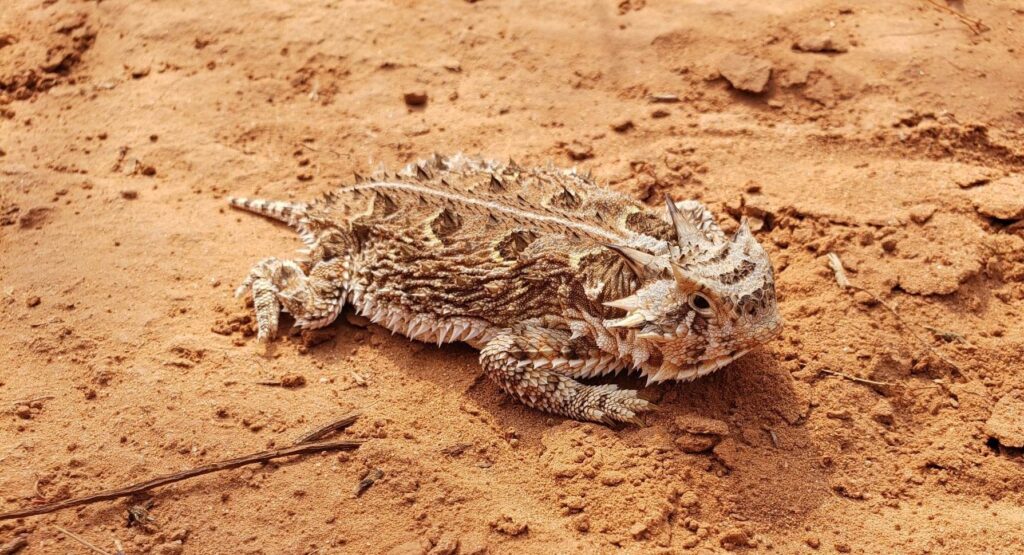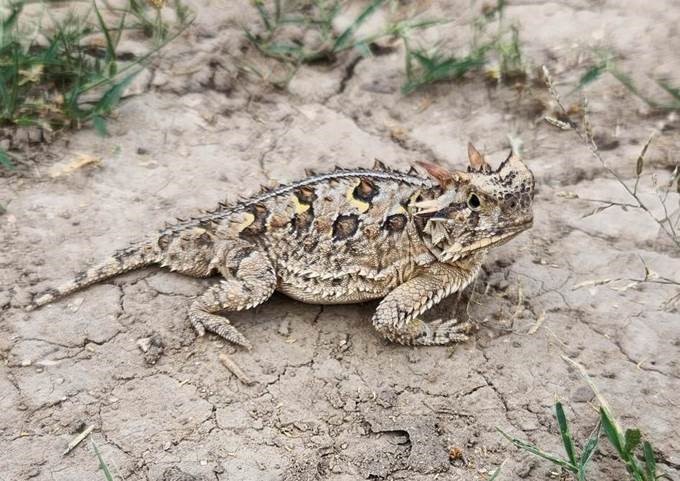Do you remember the Horney Toad?
Article by: Dr. Jacob Dykes
Did you know TX is home to three species of Horned Lizards? Those species are the Texas Horned Lizard (Phrynosoma cornutum), which is commonly called a “horny toad”, the Round-tailed Horned Lizard (Phrynosoma modestum), and the Greater Short-horned Lizard (Phrynosoma hernandesi). Horned lizards are named for the horns they have on their heads (don’t you love when scientists use logic when naming critters), and horn configuration is a good way to identify the species.
Horned Lizards are usually found in flat, open areas. The Texas Horned Lizard can be found across most of Texas, but the other two species are less broadly distributed, with the Round-tailed Lizard being in the rocky areas in the west and the Greater Short-tailed Lizard being at high elevations in the Davis and Guadalupe mountains. They range from about 3-6 inches in length and primarily eat harvester ants. In fact, they can consume 100 ants a day! If you have ever had harvester ants wreak havoc on your yard or pastures, this should excite you.
Horned Lizards like it hot and tend to be less active when the temperature drops below 75° F. They tend to hibernate from fall to spring and mate once they emerge from hibernating. The Texas Horned Lizard and the Round-tailed Horned Lizard lay eggs, but the Greater Short-horned Lizard gives birth to live young.
One of the coolest things about Horned Lizards (excluding the Round-tailed Lizard) is their defense mechanism. They have the ability to shoot a stream of blood from their eyes! The blood contains chemicals that taste bad to some predators, which encourages them to leave the lizards alone.
Check out these pictures of a Texas Horned Lizard, or “horny toad”, that we found on a ranch visit recently!



